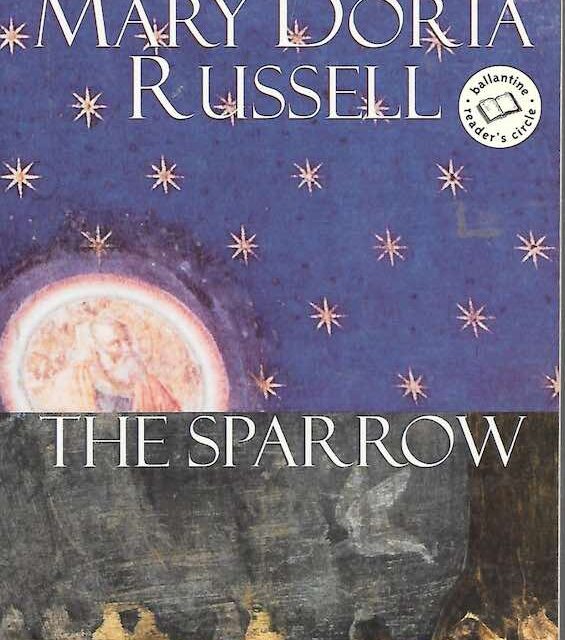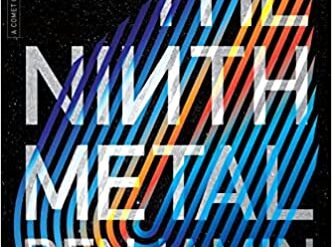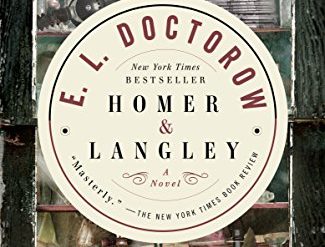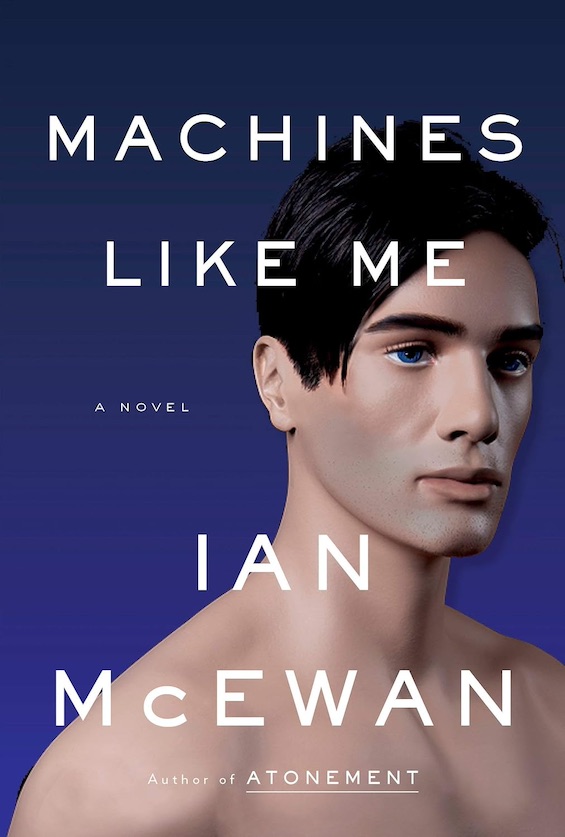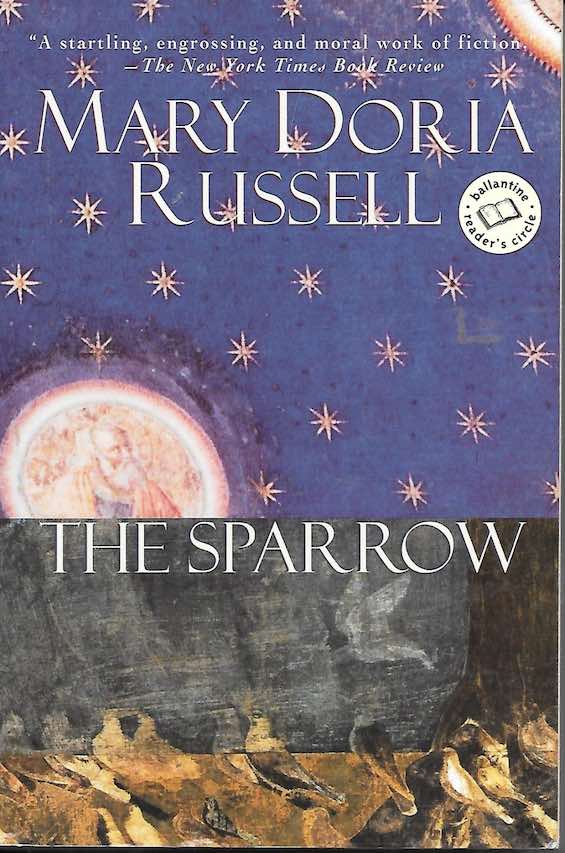
Estimated reading time: 6 minutes
What can I say about a science fiction novel that’s really about religion? Roman Catholicism, to be precise. It’s a wonder I ever picked up this novel in the first place. Admittedly, critics praised it on its first publication, and the book was important enough to be republished twenty years later. But it’s crammed with speculation about theology and philosophy. And I have no interest in either, both of which strike me as navel-gazing. On the other hand, I’m convinced that understanding morality and ethics are indispensable to living a decent and fulfilling life. And, viewed from that perspective, disregarding all the labored exchanges about priestly celibacy and the existence of God, Mary Doria Russell’s acclaimed novel about a First Contact mission, The Sparrow, is challenging, insightful, and beautifully written to boot.
An improbable First Contact mission goes badly wrong
The circumstances behind humanity’s first interstellar mission are improbable in the extreme. It’s the year 2019—note that this novel first appeared in 1996—and astronomers involved in the Search for Extraterrestrial Intelligence at the Arecibo Observatory in Puerto Rico have at last detected a radio signal that is indisputably of intelligent origin. It’s music. The young astronomer who accidentally makes the discovery talks about it to the local doctor, her husband, and the local priest, Father Emilio Sandoz.
Emilio is an extraordinarily talented linguist and his superiors in the Society of Jesus hold him in high regard. When he suggests to them that the Jesuits send an expedition to meet the alien musicians, they take him seriously. Thus, months later, they mount “the greatest voyage of discovery into the unknown since Magellan left Spain in 1519.” With Jesuit wealth funding the venture, a team of eight humans sets off for the planet in the Alpha Centauri system that they will learn is called Rakhat. The mission includes four Jesuit priests, the astronomer, the sixty-something doctor, and her husband. (I said improbable, didn’t I?)
The Sparrow by Mary Doria Russell (1996) 408 pages ★★★★☆
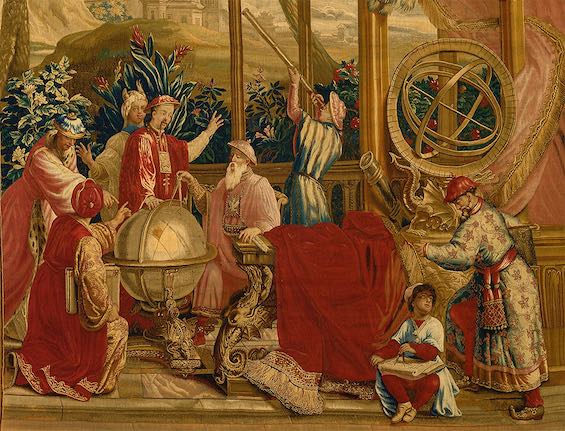
“To learn, not to proselytize”
Why would the Jesuits ever think this makes sense? Russell has an answer ready: “The Jesuit scientists went to learn, not to proselytize. They went so that they might come to know and love God’s other children.” But something goes very badly wrong, as we learn at the outset of the novel. “Father Emilio Sandoz is the sole survivor of the Jesuit mission to Rakhat.” And, worse, the United Nations has lost all contact with the crew they sent to rescue the Jesuits. Emilio returned alone to Earth, a man totally broken in body and spirit.
Brilliant character development and world-building, too
The action shifts back and forth from the present (2059-60), after Emilio’s return, to the past (2019-20), when the Jesuit First Contact mission arrives on Rakhat. We become well acquainted with the others on the mission and with several of the priests who work with Emilio for many months to persuade him to explain what went wrong. But he is the protagonist throughout.
We also meet several key figures on Rakhat, including a young girl assigned as an interpreter to the “foreigners,” a wealthy merchant, and the nominal ruler of the capital city. Russell develops her characters in depth. Her unsettling picture of Rakhat’s inhabitants and their ways is even more impressive. The alien society she portrays on Rakhat is a marvel to behold, worthy of Ursula Le Guin at the peak of her powers. And the dialogue is often supremely witty. It sparkles. Mary Doria Russell is a truly gifted writer.
As hard science fiction, a decidedly mixed bag
However, as she confesses in an afterword to the Twentieth Anniversary Edition, her powers as a forecaster are meager. Twenty nineteen has passed, and we have yet to see the extensive asteroid-mining operation that enables the Jesuits to mount an interstellar mission without spending billions of dollars and many years designing and crafting a spaceship. Whether the technology they use to travel at near the speed of light may someday become possible, I have no idea. But it is assuredly out of the question today and will probably remain so for many years to come at the very least. However, she gets relativity right. The mission requires “seventeen years out, almost four years on Rakhat, seventeen years back,” Emilio experiences the passage of only some half a dozen years, including a one-year journey each way on his body’s clock.
The crux of the story
On Emilio’s “journey of discovery as a Jesuit, he had not merely been the first human being to set foot on Rakhat, had not simply explored parts of its largest continent and learned two of its languages and loved some of its people. He had also discovered the outermost limit of faith and, in doing so, had located the exact boundary of despair. It was at that moment that he learned, truly, to fear God.” And therein lies the tale.
About the author

Mary Doria Russell was raised as a Catholic but left the church at age fifteen, and her struggles to figure out how much of that culture to pass on to her children fueled the prominence of religion in her work. She was born near Chicago in 1950 and earned a BA in Cultural Anthropology at the University of Illinois at Urbana–Champaign, an MA in Social Anthropology at Northeastern University, and a PhD in Biological Anthropology at the University of Michigan. She has won numerous awards for some of the seven novels she has written. Russell now lives near Cleveland with her husband, with whom she has a son.
For related reading
For another celebrated SF novel in which religion plays a dominant role, see A Canticle for Leibowitz by Walter M. Miller, Jr.( This classic dystopian novel is steeped in Catholicism).
For a history of the Church, see Ten Popes Who Shook the World by Eamon Duffy (Catholic Church history through the lives of 10 Popes).
Looking for different ideas about First Contact? Go to The five best First Contact novels and Peter Cawdron’s insightful First Contact book series.
For more general reading in the genre, check out:
- These novels won both Hugo and Nebula Awards
- The ultimate guide to the all-time best science fiction novels
- 10 top science fiction novels
And you can always find my most popular reviews, and the most recent ones, on the Home Page.

